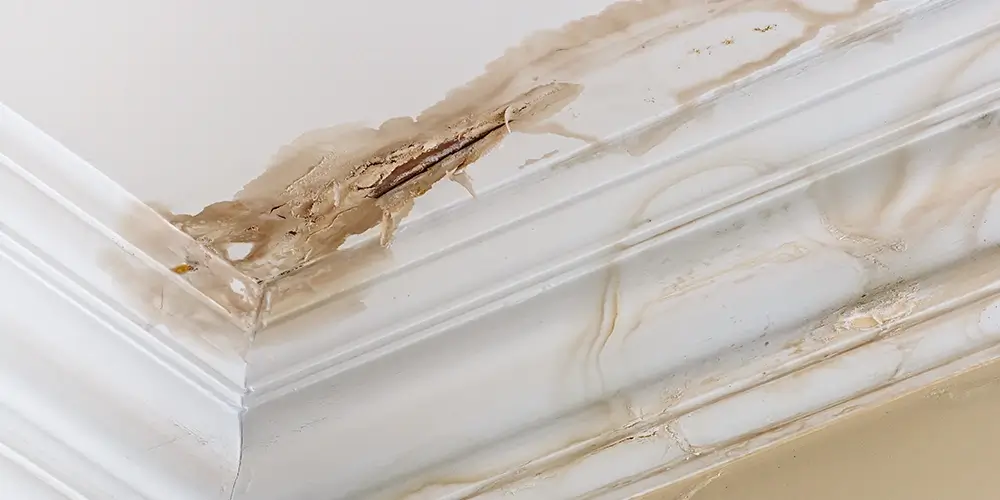Some California cities have issued orders for all leaks to be fixed within 48 hours. These orders are enforced with notices and fines depending on the city and whether the leak is repaired within their timeframe. With the rising concerns about water usage and fear of fines, unless a leak is big and noticeable, how will you know you have one until it’s too late?
1. Higher Than Normal Water Bills
The first sign most people have that there might be a leak is higher than the normal water bill. However, for many, that can be a financial shock. Keeping an eye on your water usage is an easy way not to be surprised by a water leak. If you suspect there might be a leak, check your water meter, then turn everything off and check back in a couple of hours. If you know nothing should have used water, but the number is higher, you probably have a leak.
2. Reduced Water Pressure
Another indicator of a water leak is reduced water pressure. The water pressure can slowly change as leaks get worse and can be hard to catch immediately. But once you notice a definite change in the water pressure, you know to take action.
Leaks are a common cause of reduced water pressure, but they aren’t the only problem that can cause changes. Pressure regulating valve failure, clogged pipes, high usage, and water supply issues can also affect it. It’s easier to rule out high usage if you know what was running at the time you noticed it, and many municipal water districts can help rule out if pressure fluctuations are on their end or yours. From your home, you can check the pressure regulating valve by raising and lowering the test switch. But if all of these check out, it’s time to call a plumber. They can rule out other causes and fix your water pressure.
3. Mold, Mildew & Water Staining
Mold and mildew thrive in a damp environment, and the area around leaks often provides this. There can be other causes of the two, such as roof or foundation leaks, high humidity, or overflowing appliances. If there is no known external cause of mold or mildew, it’s time to call a plumber. They can make sure the pipes are not the cause of mold and mildew.
Sometimes the first indicator of an issue isn’t mold and mildew; it’s staining. It’s most common for these stains to appear on the ceiling and where the leak is. While these can also be caused by appliance or roofing issues, plumbing leaks are a pretty big cause. Often times the staining is dry to the touch because whatever was there has evaporated. Painting over it or ignoring it won’t’ fix the problem and could be more expensive in the long run.
4. House Damage
Mold, mildew, and stains aren’t the only sort of damage that can occur when there is a leak. There are other types of noticeable damage that can signify a leak. Peeling or blistering paint is a common signifier of a leak. If your wallpaper starts to peel or come up, it could be an issue with the internal humidity, but it’s also a sign of leaking. When there are leaks near the floor, you often see staining, warping, or soft spots. Sagging ceilings are another type of house damage that can be caused by roof leaks, garage doors, age, termites, building movement, and leaking pipes. Any of these signs are noteworthy and should be checked out by a professional.
5. Strange Noises & Colors Coming from Water Pipes
If you’re hearing rattling or vibrations coming from the wall, there is a good chance that it is a sign of loose fittings. Loose fittings can leak water for months before you notice mildew or other obvious signs of damage. Pipe color can also be a sign of a leak, if the pipe has something growing on it or is corroded, it is likely leaking. Rusty or dirty water is another common sign that there is a leak. Another common sign is hot or cold spots on the floor. If one spot feels significantly warmer or colder than other spots on the floor, it could be a sign that there is a leak.
6. Leaks Outside the Home
Not all leaks happen within the home. Leaks can take place in the yard. Things like sinkholes, random wet spots, cracked pavement, and flooding around sprinkler heads are some of the signs that you might have a plumbing leak in your yard. These leaks can be expensive if not caught soon enough; an inline water detector can help catch these leaks before they get worse.
Conclusion
While fixing a leak may seem daunting, it’s one of the cheapest and easiest ways to conserve water and save money in your home. Leaks quickly become expensive if they are not fixed right away. They are also likely to come from any area inside or outside your home. So if you’re experiencing problems with finding or repairing a leak don’t hesitate to call OCP for help. Our plumbers can swiftly test, find the leak, and make the necessary repairs for you to help you start saving water and money sooner.
FAQs: Signs of a Water Leak
Q: What are common signs of a water leak in my home?
Signs include unexpected increases in your water bill, the constant sound of running water, damp spots on walls or ceilings, mold or mildew, and a noticeable decrease in water pressure.
Q: How can I check for a water leak myself?
You can conduct a simple meter test by turning off all the water in your home and observing if the water meter continues to change. This could indicate a leak. Also, inspecting visible pipes for condensation or corrosion can help identify leaks.
Q: What should I do if I suspect a water leak?
Turn off the main water supply, if possible, and contact a professional plumber to investigate and repair the leak.
Q: Can a water leak cause significant damage to my home?
Water leaks can lead to substantial structural damage, mold, and mildew growth. They can also attract pests like termites.
Q: How do leaks typically occur in the home?
Leaks result from aged or corroded pipes, faulty pipe connections, high water pressure, or damage to fixtures like toilets and sinks.
Q: Is there a way to prevent water leaks?
Regular maintenance and inspection of your plumbing system reduces the risk of leaks. Replacing old pipes and installing a water pressure regulator can also reduce the risk. The best way to prevent damage is to install an inline water leak detector, which automatically shuts off the water supply in case of a leak.
Q: How do I know if a leak is behind a wall?
Signs include peeling or bubbling paint or wallpaper, a musty odor, or visible mold on the wall’s surface.
Q: How quickly should I address a detected water leak?
As soon as possible to minimize damage to your home and prevent potential health risks.
Q: What tools might I need for DIY leak detection?
Essential tools for DIY leak detection include a flashlight, dye tablets or food coloring for toilet leaks, and a wrench for tightening loose connections. However, not all leaks are easily accessible or repairable with DIY methods.

